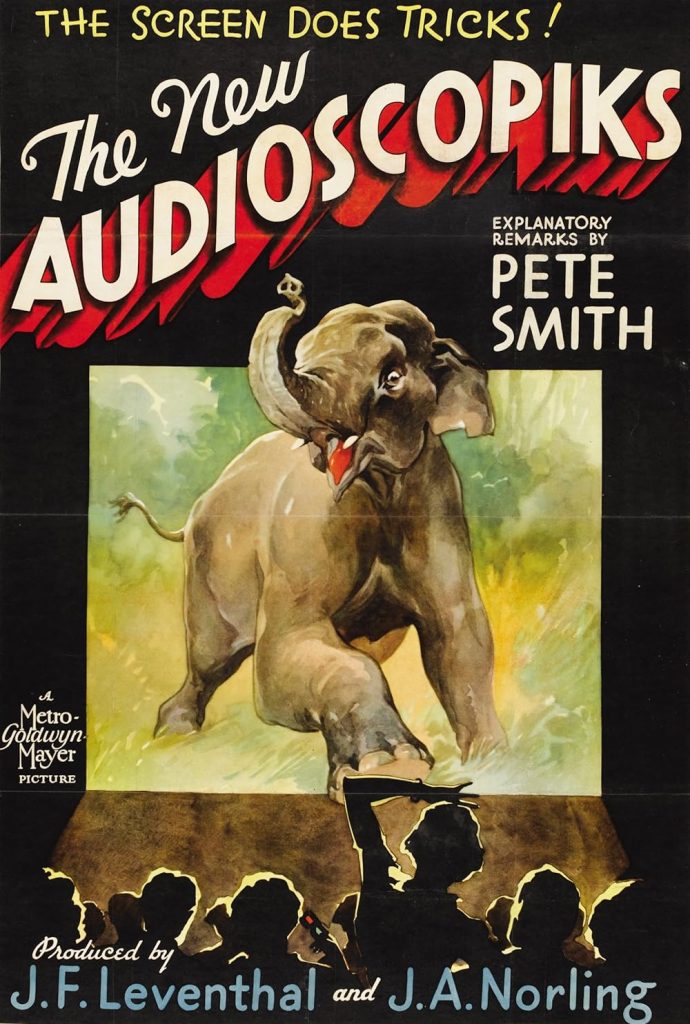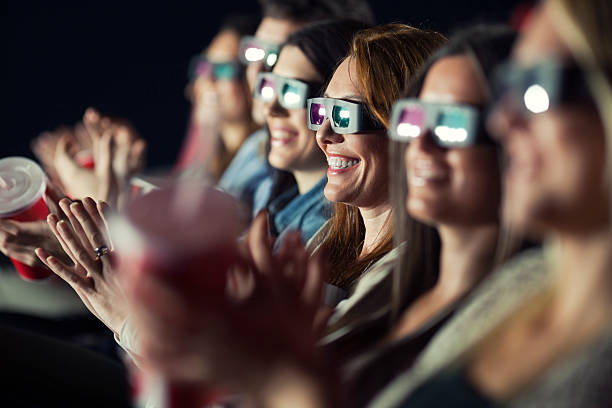
RealD 3D and IMAX 3D give viewers a whole new level of entertainment with lifelike images that transport you inside the 3D movie world. These formats feature cutting-edge screens and high-stereo contrast to give you an unforgettable cinematic experience. When you watch a movie in RealD 3D or IMAX 3D at AMC you’ll receive a specially designed eyewear which undergo UV sanitization for your safety and peace of mind.
If this is your first time to watch RealD 3D movie, you’re probably wondering about the 3D ticket prices at AMC.
But First, A Quick History
In the late 19th century, William Friese Greene had already pioneered a 3D viewing process using two side-by-side screens, connected by a stereoscope headset. But it took 30 years for the rest of the world to catch up.
In 1915, Edwin S Porter the renowned director of The Great Train Robbery experimented with red-green anaglyph test shorts in New York, however it wasn’t until 1920 when the first ever 3D movie for a commercial audience was created. The movie titled The Power of Love was screened in Los Angeles and it used a system developed by cinematographer Robert F Elder.
By 1922, Laurens Hammond and William Cassidy showcased a series of 3D shorts and a feature film titled The Man From MARS, synchronized with stereo headsets, albeit limited to a single cinema with projection capabilities.
In 1936, MGM’s Audioscopiks won the Academy Award for Best Short Subject (Novelty), marking a significant milestone in the evolution of 3D cinema.

The 1950s witnessed a boom in 3D cinema with popular films like Bwana Devil, House of Wax, and Dial M for Murder, as studios sought innovative formats to compete with the rising threat of television.
In 1973, Andy Warhol and Paul Morrissey revived 3D cinema with Flesh For Frankenstein, which showcased the Stereovision format and introduced audiences to new dimensions of horror.
The late 1970s to mid-1980s saw a resurgence of 3D films but despite several releases like Friday the 13th Part III and Jaws 3D, the technique remained more of a niche.
Finally, in 2003, James Cameron’s Ghosts of the Abyss had set the stage for his groundbreaking film Avatar, which as we all know, utilized 3D technology.
Subsequent years saw the proliferation of high-definition 3D content, including Insane Clown Posse’s Bowling Balls short film and Imax’s feature The Polar Express. This resurgence culminated in a new wave of 3D blockbusters like Journey to the Center of the Earth, Coraline, and the highly anticipated Avatar.

What Makes a Movie 3D?
The magic of 3D movies lies in their ability to simulate depth. It gives images an illusion of height, width, and depth crafted by presenting two separate images simultaneously—one for the left eye and one for the right eye.
To experience this effect, audiences wear special glasses designed to filter out specific images. Each eye perceives a slightly different image, resulting in the brain combining them to create the impression of depth.
Behind the scenes, a team of professionals collaborate to bring these captivating films to fruition. Instead of a single image captured by a camera, two separate cameras or lenses capture slightly different images to mimic the way human eyes perceive depth.
In the past, 3D glasses utilized red and blue tints to create an Anaglyph 3D effect which filter out specific colors corresponding to each eye. Today, polarized light is employed for a more refined viewing experience. AMC also offers loyalty programs for people.
Visionary directors, skilled cinematographers, creative production designers and talented VFX artists worth together in every aspect of the filmmaking process in order to create an immersive 3D experience for the audiences.

Imax 3D vs. RealD 3D
In recent years, 3D movies have become very popular in moviehouses with RealD 3D technology being the norm for most people. But is there a difference between IMAX 3D and RealD 3D?
Both utilize passive 3D technology with polarizing glasses, which allow each eye to perceive a slightly different image. RealD is known for its clear circular polarizing technique, while Imax Digital 3D (an advancement of analog Imax theaters) offers a more immersive experience with its curved and larger screens and potentially better sound quality.
AMC 3D Ticket Prices
RealD 3D and IMAX 3D technology delivers a great visual experience with no flicker and no fumbling with paper glasses. But these premium movie theater formats come with a premium price.
In AMC Madison Yards 8 which I frequent, the adult price for a RealD 3D movie is $20.99. Children’s and seniors ticket prices are $17.99 and $19.49 respectively. You can purchase AMC bulk tickets at a time for your loved ones.
However, if you watch a movie that plays before 4PM, you could get a military discounted price usually 20% off for RealD 3D. Adult ticket prices become $16.69, children’s tickets are $14.49 and senior tickets are $15.59.
As for IMAX 3D, the movie ticket prices are as follows:
Noon Showtimes
Adult (IMAX 3D) $18.39
Child (2-12) (IMAX 3D) $16.89
Senior (60+) (IMAX 3D) $16.89
Afternoon and Evening Showtimes
Adult (IMAX 3D) $20.89
Child (2-12) (IMAX 3D) $17.89
Senior (60+) (IMAX 3D) $19.40
Please take note that prices may vary slightly between AMC locations.

Customer Testimonials
Here are some feedback from actual movie-goers regarding their RealD 3D experience at AMC.
PilotJohnnyT
Plainville, Connecticut
Real 3D theater
Real 3D theater is very comfortable and gread for movies in 3D. We watched Pirates of the Caribbean there
BBJones44
Plainville, Connecticut
Many Choices and Great Seats
Review of AMC 20 Plainville
This has the most screens in CT and you can see a standard movie or IMAXor 3D when available. You can pre-order specific seats on line though as others have noted on occasion you need to ask people to leave your seat. Seats are fabulously comfortable.
Snacks are typical of modern movie theaters, no better, no worse.All in all a very comfortable pair to view films. We typically attend at off times and try to avoid times of massive crowds given the number of theaters.